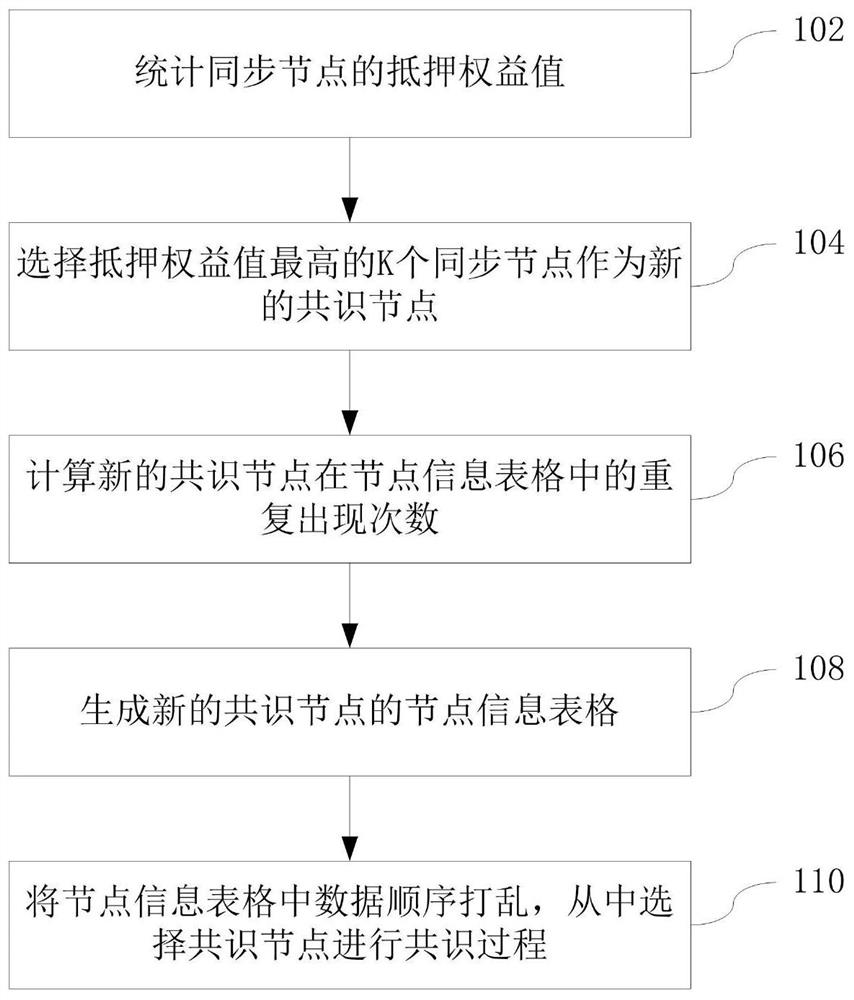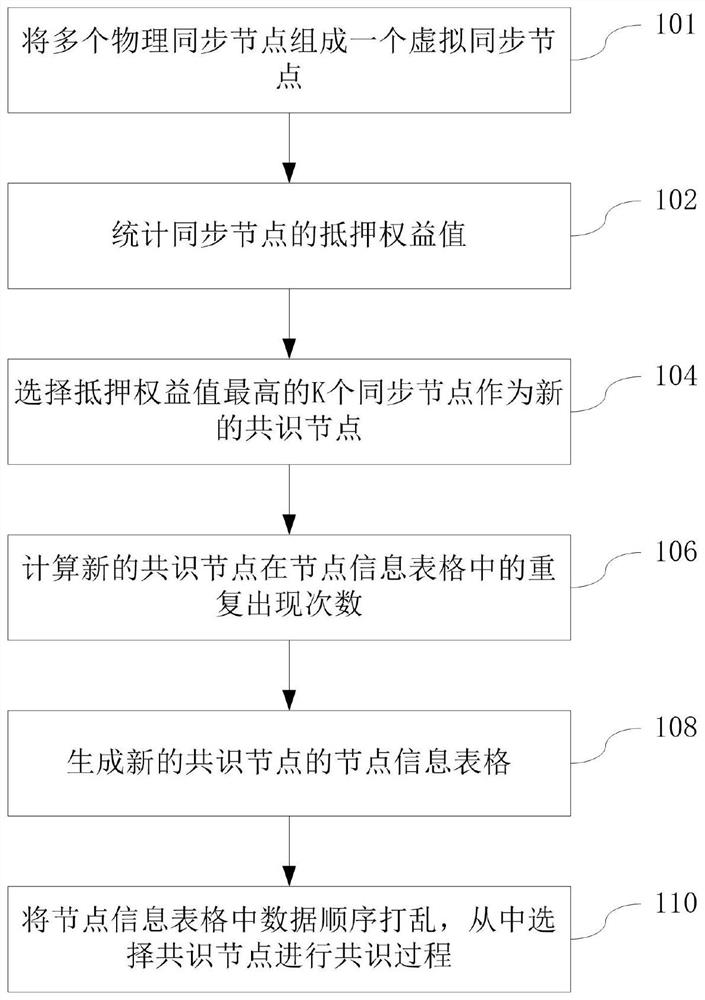A method and system for electing consensus nodes and generating node information tables
A node information and node generation technology, applied in data processing applications, finance, instruments, etc., can solve the problems of Byzantine fault consensus, failure, and inability to eliminate Byzantine nodes, and achieve the effect of reducing the probability of Byzantine errors.
- Summary
- Abstract
- Description
- Claims
- Application Information
AI Technical Summary
Problems solved by technology
Method used
Image
Examples
Embodiment 1
[0027] see figure 1 , which is Embodiment 1 of the method for electing a consensus node and generating a node information table provided by this application, including the following steps.
[0028] Statistical step 102: Statistics of the mortgage equity value of each synchronization node.
[0029]Election step 104: From all synchronization nodes, select K synchronization nodes with the highest mortgage equity value to become new consensus nodes. where K is the number of consensus nodes. For example, sort the synchronization nodes according to the mortgage equity value from high to low, and select the top K synchronization nodes as the new consensus nodes.
[0030] Calculation step 106: Calculate the number of times each new consensus node reappears in the node information table according to the mortgage equity value of each new consensus node and the length L of the node information table. The calculation principle is: the new consensus node with higher mortgage equity valu...
Embodiment 2
[0041] see figure 2 , which is the second embodiment of the method for electing a consensus node and generating a node information table provided by this application, including the following steps.
[0042] Gathering step 101: Combine multiple physical synchronization nodes into one virtual synchronization node. For example, sharding (Sharding) technology, distributed computing technology, etc. are used to realize it. The main purpose of this operation is to combine the computing capabilities of multiple physical synchronization nodes to form a unified and relatively powerful computing capability. If the consensus node has certain requirements for computing power, and a single physical synchronization node cannot meet the computing power requirements, multiple physical synchronization nodes can be combined into a virtual synchronization node to meet the computing power requirements.
[0043] Subsequent steps are the same as in Embodiment 1, and the virtual synchronization n...
PUM
 Login to View More
Login to View More Abstract
Description
Claims
Application Information
 Login to View More
Login to View More - R&D
- Intellectual Property
- Life Sciences
- Materials
- Tech Scout
- Unparalleled Data Quality
- Higher Quality Content
- 60% Fewer Hallucinations
Browse by: Latest US Patents, China's latest patents, Technical Efficacy Thesaurus, Application Domain, Technology Topic, Popular Technical Reports.
© 2025 PatSnap. All rights reserved.Legal|Privacy policy|Modern Slavery Act Transparency Statement|Sitemap|About US| Contact US: help@patsnap.com


